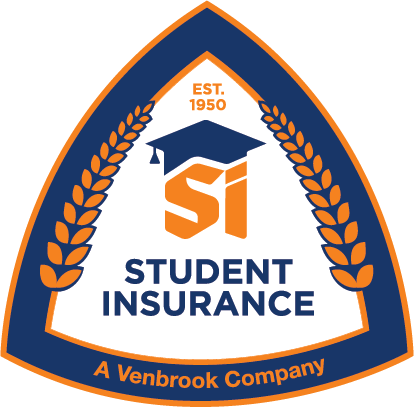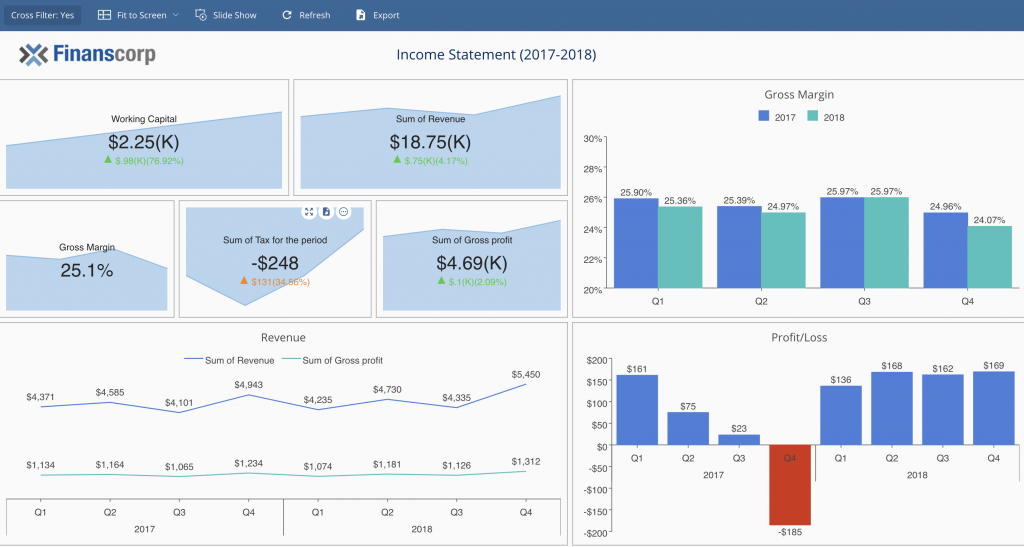Car Accident Coverage: Understanding Your Options
Car accident coverage is an integral component of car insurance, safeguarding you against financial burdens stemming from collisions. It’s like having a financial parachute, protecting you from unexpected expenses that could arise after a car accident.
Types of Car Accident Coverage
There’s a range of car accident coverage options available, each tailored to specific scenarios. Understanding these options empowers you to make informed decisions and choose the coverage that best suits your needs. Let’s dive into the different types:
Bodily Injury Liability: This coverage kicks in when you’re liable for injuries or death caused to others in an accident. It covers medical expenses, lost wages, and pain and suffering. It’s like having a safety net to protect you from financial ruin if you’re found responsible for someone else’s injuries.
Property Damage Liability: This coverage comes to the rescue when you’re responsible for damaging someone else’s property, such as their car or a fence. It helps pay for repairs or replacements, preventing you from having to foot the bill out of your own pocket.
Collision: This coverage is your go-to for damage to your own vehicle, regardless of who’s at fault. It’s like a shield that safeguards your investment, ensuring you’re not left stranded with a hefty repair bill.
Comprehensive: This coverage provides a broader scope of protection, covering non-collision-related incidents. It includes damage from events like theft, vandalism, or natural disasters. Think of it as an umbrella that shelters your vehicle from a wide range of perils.
Car Accident Coverage: Protecting You from the Unexpected
Imagine yourself navigating the bustling city streets when suddenly, a reckless driver plows into your vehicle. In the aftermath of such a traumatic event, having adequate car accident coverage can make all the difference in safeguarding your financial well-being.
Types of Car Accident Coverage
Car insurance policies offer a range of coverage options tailored to protect you from the financial consequences of an accident. Understanding these options is crucial for making informed decisions about your insurance plan.
Liability Coverage: A Legal Obligation
Liability coverage is the cornerstone of all car insurance policies. By law, drivers are required to carry this coverage to protect others from injuries or property damage caused by their negligence in an accident.
Collision Coverage: Repair or Replace Your Car
Collision coverage goes beyond liability coverage by covering your own vehicle’s repairs or replacement after an accident, regardless of fault. This includes damages resulting from collisions with other vehicles, fixed objects, or even rollovers.
How Much Collision Coverage Do You Need?
Determining the appropriate amount of collision coverage depends on several factors, including the value of your car, your financial situation, and your risk tolerance. To strike a balance, consider the following guidelines:
-
Actual Cash Value (ACV): This coverage pays the pre-accident market value of your car, minus any deductible. If you can afford a higher deductible, your premiums will be lower.
-
Replacement Cost: This coverage pays the full cost of replacing your car with a similar model and year, regardless of depreciation. It’s typically more expensive but provides peace of mind in the event of a total loss.
-
Agreed Value: This coverage sets a specific value for your car, which is paid out in the event of a total loss. This option is typically reserved for classic or custom vehicles.
Car accident coverage: A must-have protection for the road
If you’re a car owner, you know that accidents can happen at any time, no matter how careful you are. That’s why car accident coverage is so important.
It can help you pay for damages and injuries if you’re in an accident, regardless of who’s at fault. There are many different types of car accident coverage available, so it’s important to choose the right one for your needs.
Liability Coverage
Liability coverage is one of the most important types of car accident coverage. It pays for damages and injuries to other people or their property if you are at fault in an accident. Liability coverage is required by law in most states.
There are two types of car accident coverage: bodily injury liability and property damage liability. Bodily injury liability coverage pays for medical expenses, lost wages, and other damages caused to other people in an accident.
Property damage liability coverage pays for damages caused to other people’s property, such as their car or home.
The amount of liability coverage you need depends on several factors, including the state you live in, the type of car accident coverage you have, and your assets. It’s a good idea to talk to your insurance agent to determine the right amount of liability coverage for you.
Collision Coverage
Collision coverage pays for damages to your car if you are in an accident with another vehicle or object. Collision coverage is not required by law, but it can be a good idea to have it, especially if you have a new car or a car that is financed.
The amount of collision coverage you need depends on the value of your car. It’s a good idea to talk to your insurance agent to determine the right amount of collision coverage for you.
Comprehensive Coverage
Comprehensive coverage pays for damages to your car caused by events other than collisions, such as theft, vandalism, or natural disasters. Comprehensive coverage is not required by law, but it can be a good idea to have it, especially if you live in an area that is prone to natural disasters.
The amount of comprehensive coverage you need depends on the value of your car. It’s a good idea to talk to your insurance agent to determine the right amount of comprehensive coverage for you.
Other Types of Coverage
There are many other types of car accident coverage available, including:
- Medical payments coverage: This coverage pays for medical expenses for you and your passengers, regardless of who is at fault in an accident.
- Uninsured/underinsured motorist coverage: This coverage pays for damages and injuries caused by uninsured or underinsured drivers.
- Gap coverage: This coverage pays the difference between the amount your car is worth and the amount you owe on your loan if your car is totaled in an accident.
It’s a good idea to talk to your insurance agent to determine which types of car accident coverage are right for you.
Car Accident Coverage: The Vital Shield for Your Vehicle
A car accident is a harrowing experience that can leave you with not only physical injuries but also hefty repair bills. That’s where car accident coverage steps in as a savior, protecting you from such financial burdens. From collision coverage to liability insurance, there’s a range of options available to meet your specific needs. Let’s delve into this vital topic and unravel its nuances.
Collision Coverage
Collision coverage is a crucial element of car insurance. It acts as a financial cushion, covering damages to your own vehicle in the event of an accident, regardless of who is deemed at fault. Imagine this: you’re driving along, minding your own business, when suddenly, a careless driver swerves into your lane, causing a jarring collision. In such a scenario, collision coverage would swoop in to alleviate the stress of footing the repair bills for your own car.
Liability Insurance
Liability insurance is another indispensable aspect of car accident coverage. It safeguards you against potential legal claims arising from injuries or property damage caused to others during an accident where you’re found at fault. Let’s say you accidentally rear-end the car in front of you, resulting in both the other driver and their vehicle sustaining injuries. Liability insurance would step up to the plate, covering the associated medical expenses and vehicle repairs.
Comprehensive Coverage
Comprehensive coverage, as the name suggests, provides comprehensive protection for your vehicle against a wider range of perils than just collisions. It includes coverage for such events as theft, vandalism, natural disasters, and even collisions with animals. In other words, comprehensive coverage is like a steadfast companion that’s always there for you, offering peace of mind in a variety of unfortunate situations.
Uninsured/Underinsured Motorist Coverage
Uninsured/underinsured motorist coverage is a clever move that shields you from financial losses caused by drivers who either lack adequate insurance or who have insufficient coverage to meet the costs of the accident. Picture this: you’re driving along, when boom! An irresponsible driver who’s uninsured rear-ends your car. Uninsured/underinsured motorist coverage would intervene, ensuring you’re not left holding the bag for your own damages and medical expenses.
Car Accident Coverage: A Lifeline after the Wreckage
Life’s unpredictable nature is especially evident on the road. A moment’s lapse in attention can lead to a catastrophic car accident, potentially leaving you with not just physical injuries but a hefty financial burden. Car accident coverage serves as a lifeline in such situations, offering a safety net to help you navigate the aftermath of a collision.
Collision Coverage:
Collision coverage is a fundamental component of car insurance, providing protection against damages caused by a collision with another vehicle or object, regardless of fault. This coverage is crucial for covering repair costs, ensuring you’re not left with an expensive bill for a wrecked car.
Comprehensive Coverage:
Comprehensive coverage, also known as “other than collision” coverage, goes beyond collision protection. It safeguards your vehicle against a wide range of non-collision-related risks, such as theft, vandalism, fire, hail, and flood damage. This coverage ensures you’re protected against events outside of your control, giving you peace of mind.
Uninsured/Underinsured Motorist Coverage:
Uninsured/underinsured motorist coverage provides a layer of protection when you’re involved in an accident with a driver who doesn’t have sufficient insurance or who is uninsured altogether. This coverage ensures you’re not left financially responsible for the damages caused by the other driver’s negligence.
Medical Payments Coverage:
Medical payments coverage, often referred to as “MedPay,” covers medical expenses for you and your passengers, regardless of who is at fault in an accident. This coverage can be particularly valuable in covering deductibles and co-pays, reducing the financial burden associated with medical treatment.
What Type of Coverage Do I Need?
The specific car accident coverage you need depends on your individual circumstances and the coverage offered by your insurance company. If you own a new or valuable vehicle, comprehensive coverage may be a wise investment. If you live in an area with high crime or natural disaster risk, additional coverage, such as theft or flood protection, may be necessary. Speak with your insurance agent for a comprehensive evaluation of your needs and to tailor a coverage plan that fits your specific situation.
Car Accident Coverage: A Comprehensive Guide
Car accidents can be stressful and expensive experiences. However, having the right car accident coverage can help you navigate these challenges more smoothly. From navigating the claims process to understanding your policy, this guide will provide you with all the information you need to make informed decisions about your car accident coverage.
Choosing the Right Coverage
The amount and type of car accident coverage you need depends on several factors, including your driving record, the value of your car, and your financial situation. It’s a good idea to consult with an insurance agent to determine the best coverage for your individual needs.
Types of Coverage
There are several types of car accident coverage available, including:
- Liability Coverage: Protects you from financial responsibility if you cause an accident that injures someone or damages property.
- Collision Coverage: Covers the cost of repairing or replacing your car if it is damaged in an accident, regardless of who is at fault.
- Comprehensive Coverage: Protects your car from damage caused by non-collision events, such as theft, vandalism, or weather damage.
- Medical Payments Coverage: Covers medical expenses for you and your passengers in the event of an accident, regardless of who is at fault.
- Uninsured/Underinsured Motorist Coverage: Provides compensation if you are injured in an accident caused by an uninsured or underinsured driver.
Determining Your Coverage Limits
The coverage limits you choose will determine the maximum amount your insurance company will pay for each type of coverage. Higher limits provide more protection, but also result in higher premiums. It’s important to balance your need for coverage with your budget.
Deductibles
A deductible is the amount you pay out-of-pocket before your insurance coverage kicks in. Choosing a higher deductible can lower your premiums, but it means you’ll have to pay more out-of-pocket if you need to file a claim.
Exclusions
Some types of accidents or damages may not be covered by your insurance policy. It’s important to carefully review your policy and understand any exclusions that may apply.
Filing a Claim
If you are involved in an accident, it’s important to report the claim to your insurance company as soon as possible. You will need to provide the company with details about the accident, as well as any documentation you have. Be prepared to answer questions about the accident and your coverage.
Did You Know?
- In the United States, an estimated 6.7 million car accidents occur each year.
- Over 3 million people are injured in car accidents each year.
- The average cost of a car accident is over $15,000.
Car Accident Coverage: A Comprehensive Guide
In the unfortunate event of a car accident, having comprehensive insurance coverage is paramount to safeguard yourself financially. Car accident coverage typically encompasses:
- Collision coverage: Protects your vehicle from damage sustained in collisions with other vehicles or objects.
- Comprehensive coverage: Covers damage caused by events such as theft, vandalism, or natural disasters.
- Uninsured/underinsured motorist coverage: Provides protection if you are involved in an accident with a driver who lacks or has insufficient insurance.
Filing a Claim
If you find yourself in the unfortunate position of being involved in a car accident, promptly filing a claim with your insurance company is crucial. The claims process typically entails the following steps:
- Reporting the Accident: Contact your insurance company immediately to report the accident. Provide details of the incident, including the time, location, involved parties, and any witnesses.
- Gathering Evidence: Collect relevant documentation such as police reports, witness statements, and photos of the accident scene.
- Determining Liability: Your insurance company will investigate and determine who is liable for the accident based on the evidence gathered.
- Calculating Damages: Your insurance company will assess the extent of the damage to your vehicle and any injuries sustained. They will determine the amount of compensation you are entitled to under your policy.
- Submitting a Claim: Once you have all the necessary documentation, you can submit a formal claim to your insurance company.
- Negotiating a Settlement: If the insurance company disputes your claim or offers a settlement you find unsatisfactory, you may need to negotiate to reach a fair outcome.
- Receiving Payment: Once your claim is approved, you will receive payment from your insurance company. The payment will cover the costs of vehicle repairs, medical expenses, and other damages.
Understanding your car accident coverage and the claims process is essential to ensure you receive the compensation you deserve. Should you encounter any difficulties, don’t hesitate to seek legal assistance to protect your rights.
Car Accident Coverage: Essential Protection for Drivers
Life can throw us unexpected curveballs, and sometimes, those curveballs come in the form of car accidents. It’s an unfortunate reality that even the most cautious drivers can find themselves in such situations. Thankfully, having adequate car accident coverage can help provide a financial safety net during these trying times.
Understanding Your Options
When it comes to car accident coverage, there are various types to consider. Collision coverage protects your vehicle if it sustains damage in an accident, regardless of who’s at fault. Comprehensive coverage extends protection to your car for non-collision-related incidents, like theft, vandalism, or weather events. Liability coverage is crucial as it helps cover costs if you cause an accident and are legally responsible for the damages.
Choosing the Right Policy
The key to protecting yourself financially after a car accident lies in selecting the most suitable policy for your needs. Consider your budget, the type of car you drive, and the level of coverage you desire. It’s wise to seek guidance from an experienced insurance agent who can provide personalized advice based on your circumstances.
Importance of Deductibles
When choosing a policy, understanding the concept of deductibles is essential. A deductible refers to the amount you pay out of pocket before your insurance kicks in. Higher deductibles generally result in lower monthly premiums, but they also mean higher upfront expenses if you file a claim.
Uninsured and Underinsured Motorist Coverage
Unfortunately, not all drivers carry adequate insurance. Uninsured or underinsured motorist coverage comes to your rescue in such scenarios. It can provide financial protection if you’re involved in an accident with a driver who doesn’t have insurance or whose insurance coverage is insufficient to cover your damages.
Medical Payments and Personal Injury Protection
Accidents can lead to injuries, and medical payments coverage helps cover medical expenses for you and your passengers. Personal injury protection (PIP) goes a step further, providing compensation for lost wages, medical expenses, and other related costs regardless of who is at fault.
Gap Insurance
If you have a newer vehicle and owe more on your loan or lease than its depreciated value, gap insurance can help fill the gap between what you owe and what your insurance company pays if your car is totaled or stolen. This extra coverage can protect you from having to pay out of pocket to settle your loan or lease.
Rideshare Coverage
For those driving for ride-sharing services, it’s crucial to ensure adequate coverage. Many personal auto insurance policies may not extend coverage while you’re using your vehicle for commercial purposes. Rideshare insurance can fill this gap, providing financial protection during ride-sharing activities.
Conclusion
Car accident coverage is not just a smart move; it’s a necessity for responsible drivers. By understanding your coverage options and making informed choices, you can drive with peace of mind, knowing that you’re financially protected in the event of an unfortunate incident. Remember, accidents can happen anytime, anywhere, so don’t leave yourself vulnerable. Get the right car accident coverage today and drive with confidence.




Leave a Reply